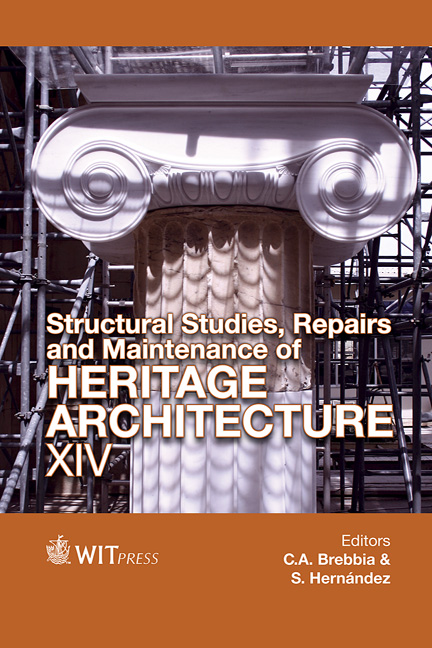The Sacredness Of Reinforced Concrete Between Structural And Formal Links
Price
Free (open access)
Transaction
Volume
153
Pages
12
Page Range
531 - 542
Published
2015
Size
4,664 kb
Paper DOI
10.2495/STR150441
Copyright
WIT Press
Author(s)
S. Bertorotta, F. Scibilia
Abstract
This paper examines the design of some religious buildings built of reinforced concrete during the post-war period in the city of Palermo. After an introduction to Italy’s architectural panorama, in which the principal trends in religious architecture during the period considered are set forth, marked by the appearance of reinforced concrete, Palermo’s panorama will be discussed in depth, together with its specific cultural features and some creations of religious buildings in which the use of reinforced concrete becomes more mature and aware. The new technology, in fact, at first hidden behind stone claddings, was progressively unveiled through an ever more aware use of its structural and aesthetic potentials.
Specifically, out of the three structural categories identified through a systematic examination of all the religious buildings of the period, the focus will be placed on the one defined as “portal-type”. These churches represent the period of “transition” to be looked at more closely better than others, with their frequent mixing of traditional techniques and the “new” reinforced concrete technology. Even if their structures cannot yet be classed as framed structures insofar as often lacking in transversal links to the portals, the roofs of these buildings, all between 20 and 30 meters and characterized by sizeable spreads without any intermediate supports, represented a field of total experimentation for the leading architects of the time.
These architects were receptive to the influences of much more daring experimentation at a national and European level. They fully absorbed said influences, interpreting them in a way that did not betray the materials and techniques of local architecture.
Keywords
reinforced concrete, structural evolution, religious architecture XX century, covering large spans




